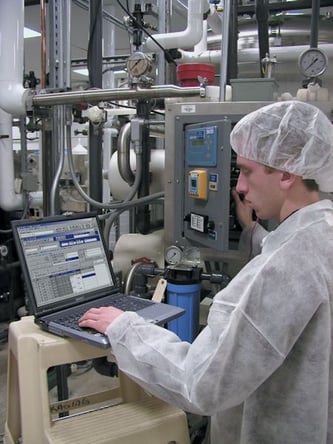This guest blog post is authored by Nick Volpone, president of Prime Technologies Inc.
Not long ago, instrument calibration activities were accomplished using paper worksheets. When calibration management software was used it was primarily as an asset information repository and event scheduler. Worksheets were typically created and approved by management or quality personnel who presumably understood current industry standards. They would initially design a form which included pre-determined math calculations. Technicians who were assigned the forms were often given wide latitude when choosing acceptable cardinal test points and a wide pass/fail tolerance band when performing tasks and logging data. With work completed, math entries were routinely rechecked by others using calculators. Final worksheets were subsequently stored in secure file locations to manually access for future audits and historical document retrieval.
would initially design a form which included pre-determined math calculations. Technicians who were assigned the forms were often given wide latitude when choosing acceptable cardinal test points and a wide pass/fail tolerance band when performing tasks and logging data. With work completed, math entries were routinely rechecked by others using calculators. Final worksheets were subsequently stored in secure file locations to manually access for future audits and historical document retrieval.
This manual method was time consuming and often resulted in inconsistencies and human errors. With more current asset management software, these practices are improving within most organizations. Limited features and functions still inherent in some of these solutions demand work-around policies which continue to require the use of paper documents.
So what are the essential elements that constitute a legitimate paperless system? To start, unique accounts and user groups must be established designating authoritarian roles to make quality decisions, establish standardized practices and delegate approval responsibilities. Preferably, software features should be powerful and flexible to allow the entire regulatory work flow process to be managed electronically with sign-on authorization and user authentication controlled via 21 CFR Part 11 requirements or similar administrative controls.
Master asset record creation should have adequate interactive and characterized fields to facilitate standardized test routines. Pertinent automated math functions should calculate all direct and correlating numeric values. Numeric and date fields should be characterized and these values should not be stored as simple text. Changes to list box values should be user access controlled to assure the integrity of commonly shared terminology. The ability to have variable decimal resolutions and relational correlations is also important. Multiple test routines for a single asset are essential for test and measurement, analytical and other types of complex devices and systems.
Comprehensive data entry functionality is the core requirement of a paperless calibration system. Real-life field conditions do not always allow testing at optional cardinal value points. Standardization, however, demands some degree of control over work performed. In many instances actual captured values and their respective in/out tolerance findings are ascertained via the measurement of differing relational engineering values (i.e. temperature to milliamp). In such instances, the system must provide +/- controls to allow the technician to deviate from optimum values and to auto-recalculate all other associated values that should change accordingly. Visual prompts to confirm acceptable readings when entering found/left data is helpful and eliminates the possibility for human errors.
A total paperless calibration system can only be achieved when quality management tasks are integrated within the solution. Change control, e-signature approvals, reminders, alerts, auto e-mails, standard and customized reports, user access and configuration controls, audit trails, etc. are just a few to consider. Complexities increase when deployment requires uniquely configured accounts, complementary maintenance functions, system validation, integration and other OEM options. Often, Wi-Fi connection is not always available so a system that allows import/export to mobile devices should be considered. Benefits with mobile technology usually commensurate with the degree of calibration functionality that can be emulated on the off-line device.
Is it worth the effort? In most cases, the primary challenge is culture change acceptance by the user community. History has shown that the ultimate benefits gained through increased productivity, reduced operational costs, standardization of practices and improved quality oversight more than justify the investment.
About the Author Nick Volpone is president at Prime Technologies Inc. located in West Chester, Penn. Nick majored in business administration at West Chester University with an additional A.S. in electronic engineering at CHI Institute. In the past, he has worked as a field support representative for Emerson Electric, as an account representative for Johnson Controls and as a aales manager for Johnson Yokogawa.
Nick Volpone is president at Prime Technologies Inc. located in West Chester, Penn. Nick majored in business administration at West Chester University with an additional A.S. in electronic engineering at CHI Institute. In the past, he has worked as a field support representative for Emerson Electric, as an account representative for Johnson Controls and as a aales manager for Johnson Yokogawa.
[/dropshadowbox]



